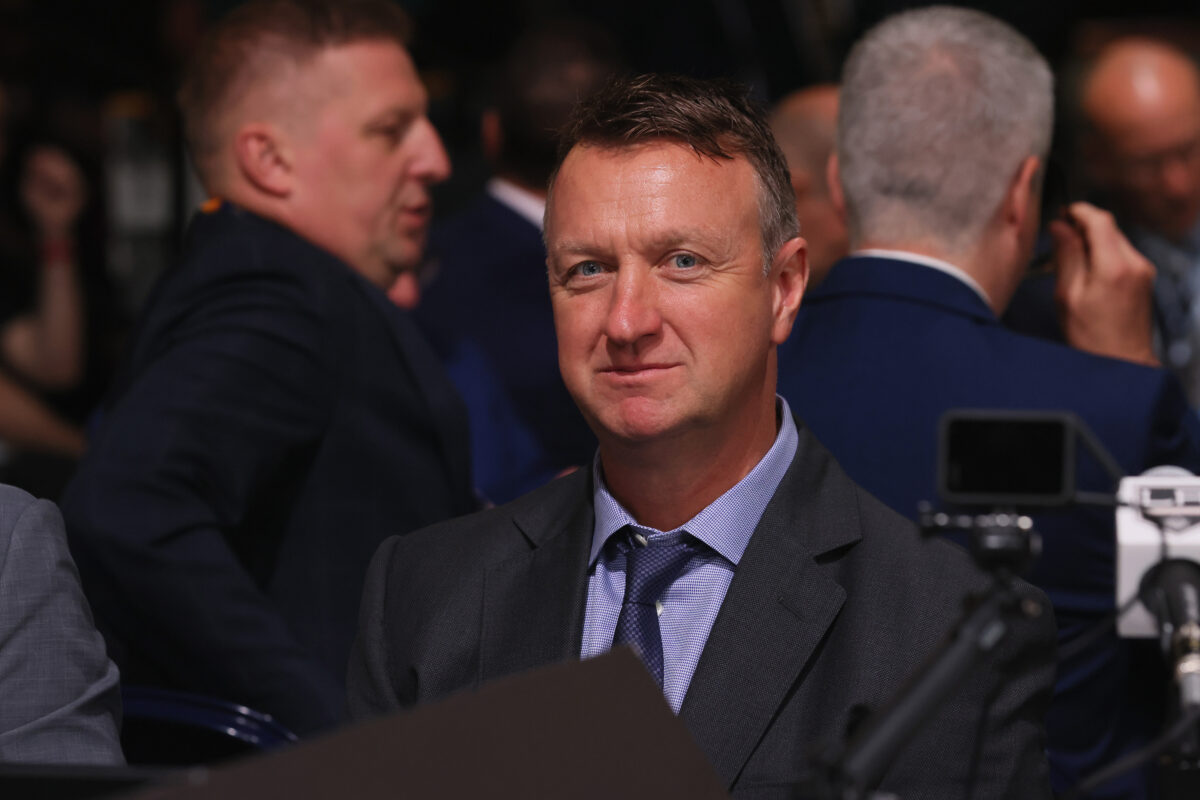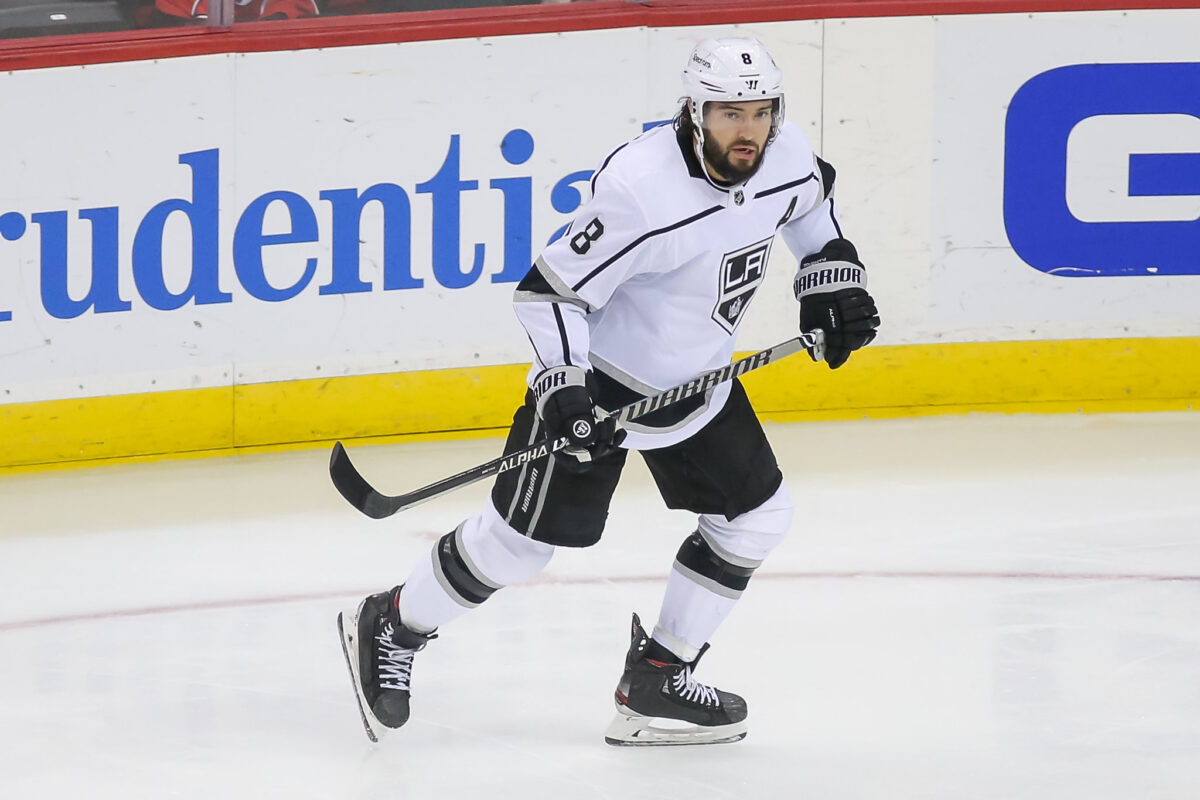1,270 games, 777 points, captain of the Los Angeles Kings, Stanley Cup, and Norris Trophy winner. Rob Blake is a legend in hockey and the Kings’ organization. His most recent and current position is as general manager, where he has been at the helm since April 10, 2017. Seven years later, he has taken the team through a full rebuild following their 2010s success. However, the team has yet to take that next step, and the question must be asked: how long of a leash will Kings ownership give Blake?
Riding the Rebuild
Following the success in the early 2010s, the Kings were bad. They had many expensive contracts and an aging core. So, they sold off many assets, let the aging players walk, and kept only their top players. This has resulted in significant changes to the roster through trade, the draft, and free agency. This new, younger core consists of elite talents such as Kevin Fiala, Quinton Byfield, Brandt Clarke, and Adrian Kempe.
Related: Revisiting Maple Leafs and Kings’ Jack Campbell Trade
This turnaround has been the talk of the media in recent years since the Kings have had a handful of top draft selections where they brought in elite talents. Unfortunately, not many of them have panned out, at least so far. The blueprint was strong. Blake sold off assets at peak value for future draft capital and prospects and created a system to develop. However, whether it was in minor or junior leagues, there were bumps in that path that led to certain prospects failing to reach expectations.
While some players such as Alex Turcotte, Arthur Kaliyev, and Akil Thomas have struggled, there are exceptions on the other side, such as Jordan Spence, Adrian Kempe, and Mikey Anderson who have outperformed expectations. Also, it is hard to entirely blame Blake for the production of the struggling players because it is on them to play well at the end of the day.
Room to Grow
Blake’s work has been admirable, but there is a lot of room to grow. At times, the current core has dominated, playing fast-paced hockey where they can do no wrong. The team has the stars at the top that pair well with its depth and has a mix of youth and veteran leadership to create a cohesive group. Unfortunately, they can look disastrous, too.

These struggles were best seen in the team’s March 16 loss to the Dallas Stars. Two teams in the Western Conference hoping to make deep playoff runs battled for a big two points, and the Kings were down 4-0 just over two minutes into the second period. They gave up an early goal to Thomas Harley in the first period and never recovered. They looked slower, a lost team that allowed Dallas to control the slot, hash marks, and net-front area, a formula for disaster.
Combining these defensive struggles with a goaltending tandem unable to play at a high level consistently shows the clear difference between the Kings and the top teams in the league. When the playoffs come around, the Kings’ most probable opening-round matchup would be the Edmonton Oilers. What happens in a seven-game series when you face the best player in the NHL on a team with other dynamic playmakers and scorers? This question is not meant to degrade Blake and the Kings, but shows that changes are needed to improve the group. Adding a shutdown defenseman on the third pairing for next season in addition to finding consistency in the net would take the team to the next level.
What Now?
Getting to that upper echelon of contenders is not easy, and staying there is even more challenging. The Kings have done it before in their 2010s runs, but this current core is a far cry from the roster built in the late 2000s. Teams today have shown no loyalty, firing Stanley Cup-winning coaches just years after the win, or moving on from bad coaches and executives not even a year into their contracts if the team is not moving in the right direction. For Blake, a Kings’ legend, his leash may not be as long as one might think. Future Hall of Famers Drew Doughty and Anze Kopitar are getting up there in age, and only have so many years left.

Blake may, and should, sense that pressure, and make a big move this summer if the team does not go on a deep playoff run. There are holes to fill, and it may be time for him to put his job on the line by going all-in for the core he built. Speculation over potential moves will grow rampant, but there should be no doubt that there is an abundance of ways to improve the team.
Building a hockey team is hard, and Blake has done an impressive job as a first-time general manager. While his work has been great in theory, results are what matter most in the sport of hockey. Now the question is, if the Kings do not take that next step soon, where will the changes be made: Blake or the players? Considering it is more of a challenge to overhaul the core than change the general manager, Blake may be the one to get the boot, but hopefully, the team does not reach that point.
